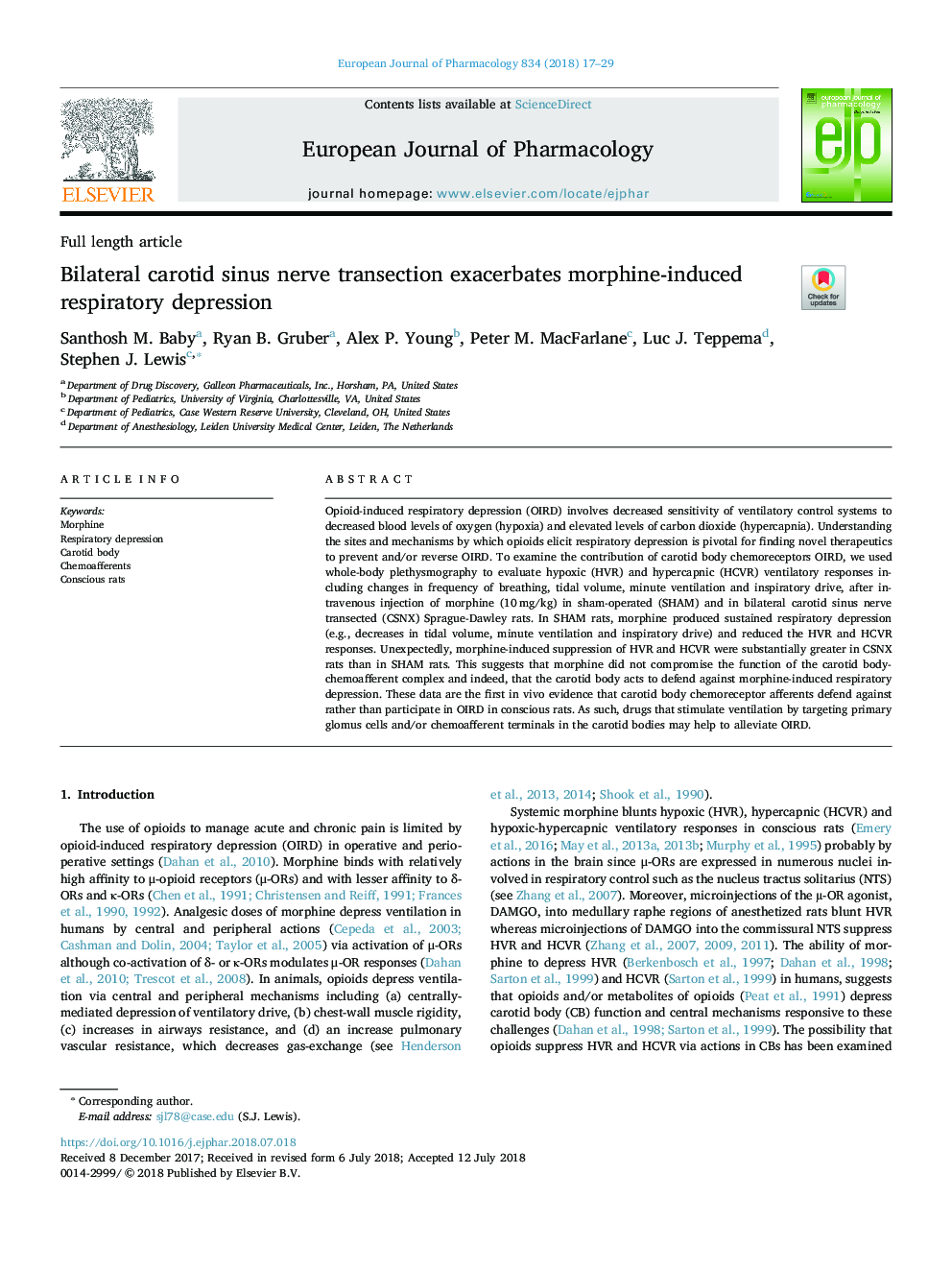| کد مقاله | کد نشریه | سال انتشار | مقاله انگلیسی | نسخه تمام متن |
|---|---|---|---|---|
| 8528905 | 1558846 | 2018 | 13 صفحه PDF | دانلود رایگان |
عنوان انگلیسی مقاله ISI
Bilateral carotid sinus nerve transection exacerbates morphine-induced respiratory depression
ترجمه فارسی عنوان
افتراء تنفسی ناشی از مورفین دو طرفه ترشح عصب کاروتید سینوسی را تشدید می کند
دانلود مقاله + سفارش ترجمه
دانلود مقاله ISI انگلیسی
رایگان برای ایرانیان
کلمات کلیدی
موضوعات مرتبط
علوم زیستی و بیوفناوری
علم عصب شناسی
علوم اعصاب سلولی و مولکولی
چکیده انگلیسی
Opioid-induced respiratory depression (OIRD) involves decreased sensitivity of ventilatory control systems to decreased blood levels of oxygen (hypoxia) and elevated levels of carbon dioxide (hypercapnia). Understanding the sites and mechanisms by which opioids elicit respiratory depression is pivotal for finding novel therapeutics to prevent and/or reverse OIRD. To examine the contribution of carotid body chemoreceptors OIRD, we used whole-body plethysmography to evaluate hypoxic (HVR) and hypercapnic (HCVR) ventilatory responses including changes in frequency of breathing, tidal volume, minute ventilation and inspiratory drive, after intravenous injection of morphine (10â¯mg/kg) in sham-operated (SHAM) and in bilateral carotid sinus nerve transected (CSNX) Sprague-Dawley rats. In SHAM rats, morphine produced sustained respiratory depression (e.g., decreases in tidal volume, minute ventilation and inspiratory drive) and reduced the HVR and HCVR responses. Unexpectedly, morphine-induced suppression of HVR and HCVR were substantially greater in CSNX rats than in SHAM rats. This suggests that morphine did not compromise the function of the carotid body-chemoafferent complex and indeed, that the carotid body acts to defend against morphine-induced respiratory depression. These data are the first in vivo evidence that carotid body chemoreceptor afferents defend against rather than participate in OIRD in conscious rats. As such, drugs that stimulate ventilation by targeting primary glomus cells and/or chemoafferent terminals in the carotid bodies may help to alleviate OIRD.
ناشر
Database: Elsevier - ScienceDirect (ساینس دایرکت)
Journal: European Journal of Pharmacology - Volume 834, 5 September 2018, Pages 17-29
Journal: European Journal of Pharmacology - Volume 834, 5 September 2018, Pages 17-29
نویسندگان
Santhosh M. Baby, Ryan B. Gruber, Alex P. Young, Peter M. MacFarlane, Luc J. Teppema, Stephen J. Lewis,
